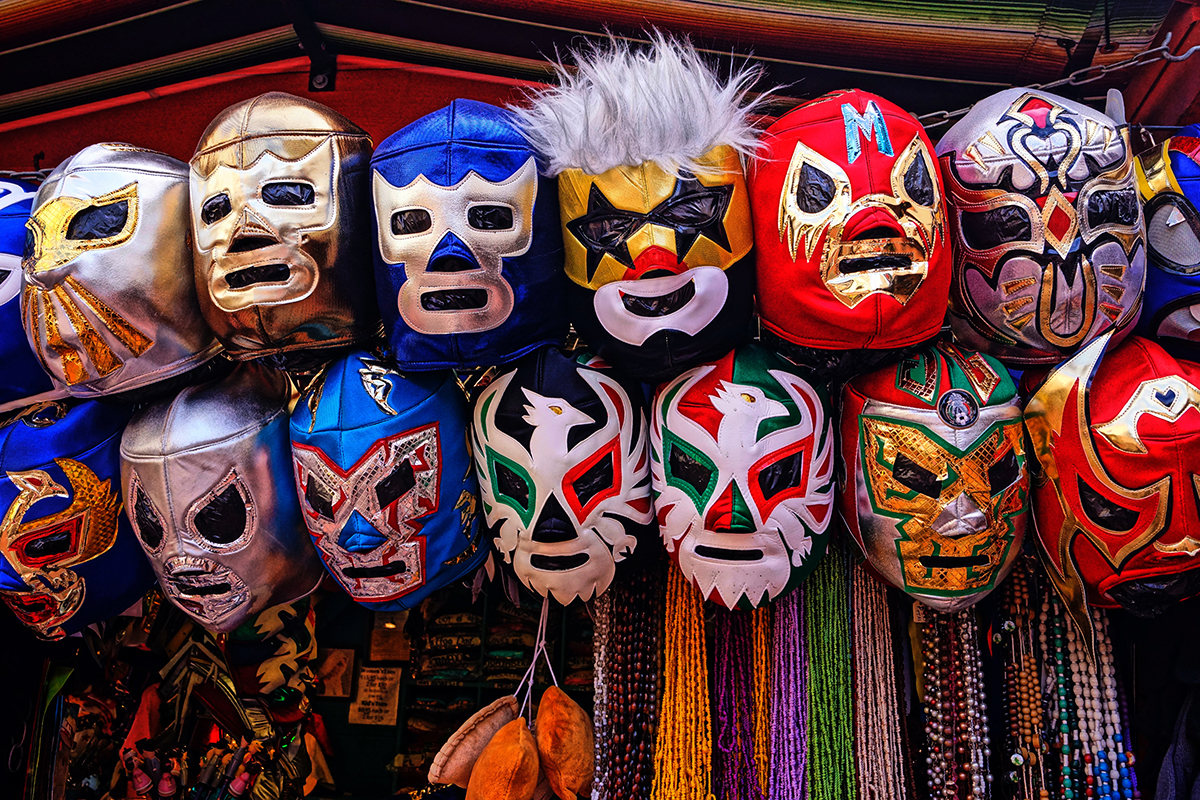“Drag is not a contact sport” are the iconic words spoken by RuPaul on season three of RuPaul’s Drag Race. But what if it was? Wrestling and drag already share a lot in common with their use of costumes, personas, and flashy moves, so why not expand the sport to allow for more visibly queer wrestlers to make their way to the forefront?
Male wrestling evokes homoeroticism with its close physical contact between half-naked, oiled men, yet it’s also chock full of homophobia. In the early 2000s, the WWE advertised an in-ring wedding ceremony for Billy Gunn and Chuck Palumbo, a wrestling duo who didn’t shy away from flaunting their chemistry and wearing matching outfits. After enduring boos from the audience, the couple suddenly announced they weren’t gay and that the whole event was a publicity stunt, causing the ring to erupt into an attack on the duo — a bashing of a previously assumed same-sex couple.
This history of homophobia has further embedded itself into the storytelling of wrestling where the bad guys, referred to as heels, are often cast as LGBTQ+ individuals. The biggest names that come to mind are Adrian Adonis and Goldust, two overly sexual heels who made names for themselves as villains of the ring. Rather than genuinely being representation, these storylines were purely for show. Openly queer wrestler, Effy, critiqued past effeminate heels in a ***Pittsburgh City Paper interview: “All those guys going back, they were just straight dudes who knew there was money in a gay gimmick.”
A more recent example of homophobia includes a villain team that was recorded as part of a storyline in a locker room shaving each other’s backs. The video was posted online and endorsed by the WWE on Twitter where the discussion devolved into homophobic jokes and insults to the men’s masculinity. Despite how theatrical and over-the-top pro wrestling might be, it still rushes to distance itself from the LGBTQ+ community any chance it gets.
John Nash, a historian, pinpoints that camp (meaning an amusing mix of theatricality and exaggeration) was first introduced to the ring by George “Gorgeous” Wagner, a well-known wrestler in the ‘40s. George was known for dressing in chiffon and lace and sporting an ostrich feather fan and platinum blonde hair as he entered a match.
This overt subversion of gender roles was something that fans both admired and reviled, but nevertheless catapulted him into becoming a long-time leading act. On an international level, exóticos (a term for mostly gay, effeminate wrestlers) in Mexico have been occupying their niche for decades in lucha libre (freestyle wrestling) where they proudly display their sexuality paired with makeup and feminine attire. Although they’ve been criticized for embodying stereotypes of homosexuality and playing up femininity for laughs, a majority of exóticos are gay in and out of the ring.
This calls into question how queer performers are allowed to express themselves within the confines of having to appeal to a wider, largely straight audience. Is the incorporation of gay stereotypes into acts hurting the cause of LGBTQ+ wrestlers rather than being progressive? Arguably, they could be seen as helping to break the shackles of macho masculinity in wrestling and expose others to LGBTQ+ talent, especially if it’s done by members of the queer community. However, stereotypes can also, understandably, be interpreted as a disservice and mockery of queer culture.
Despite discrimination, the queer community has been pushing boundaries and finding its place in the wrestling world. Rick Cataldo, who goes by “The Boy Diva” in the ring, has been organizing A Matter of Pride for a number of years — an event that promotes and accepts wrestling in drag. These smaller, openly-LGBTQ+ events allow for queer wrestlers to express themselves authentically without the pressure of being televised or controlled by management. Wrestling personas will always be exaggerated, but these events allow performers to have full control over their own narrative; this empowers them to push the limits in ways pro wrestling hasn’t mirrored.
Pro wrestling has a dark and undeniable past of homophobia, but the future looks bright. More LGBTQ+ performers are coming forward now than ever before and showing they can compete with the best. Drag and wrestling have so much in common that they’re beginning to merge in incredible ways — the message being that a new era of wrestling is on its way.
Chandy is a biology major/chemistry minor who's been a staff writer, Arts editor, and Managing Editor at The Cascade. She began writing in elementary school when she produced Tamagotchi fanfiction to show her peers at school -- she now lives in fear that this may have been her creative peak.


